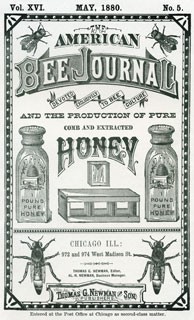PNR: This Old Marketing with Joe Pulizzi and Robert Rose can be found on both iTunes and Stitcher.
In this week’s episode, Robert and I discuss the ridiculous way that HubSpot handled a recent scandal with a “tell-all” news release. Next, we ponder the chaotic world of media companies and why they will start to act more like wire services. We disagree with a columnist who believes podcast sponsorship blurs the line between journalism and advertising and give a hearty two thumbs way up to the growing trend of large companies funding documentary films. Rants and raves include the social media mob mentality surrounding the death of Cecil the lion and why YouTube’s top stars aren’t making as much money as you think. We wrap up the show with a #ThisOldMarketing example of the week from American Bee Journal.
This week’s show
(Recorded live August 3, 2015; Length: 1:02:02)
Download this week’s PNR This Old Marketing podcast.
If you enjoy our PNR podcasts, we would love if you would rate it, or post a review, on iTunes. Missed a previous episode? Go to the main This Old Marketing page for a full list of archives.
1. Content marketing in the news
- Content marketing and the finance industry (3:50): Financial marketers operate in a heavily regulated industry and their customers can no longer be categorized as being interested in only business finance or only personal finance. In our latest white paper, CMI examines the finance sector – sharing research about how these marketers use content marketing and highlighting examples, tips, and takeaways from those who are finding success. It contains some surprising statistics and some thought-provoking case histories. If your job has anything to do with finance, you ought to read this report.
- HubSpot fires CMO – issues ridiculous press release (7:19): Mike Volpe, HubSpot’s CMO, was fired for allegedly having tried to obtain a copy of former employee Dan Lyons’ upcoming tell-all book about his two years with the Boston tech company. To make matters worse, HubSpot published a ridiculous news release that airs its dirty laundry in public. Robert and I are shocked, not only at the amount of detail shared about what happened, but also a quote from one of its directors about how “disappointed” she is in Volpe’s actions. Why include this in a news release, which is supposed to be a factual document? Robert declares this an epic fail and an example of how not to handle this type of corporate communication.
- Mutually assured content? (16:09): Ezra Klein predicts that in a few short years, media companies will become like wire services – publishing original articles that will be automatically syndicated to dozens of channels and outlets. This trend will mean larger distribution for their content, but less advertising revenue. John Herrman published an article on The Awl that expands upon Klein’s predictions. Robert and I are convinced the next several years will be chaotic for media companies as they try to figure out how to effectively work with these distribution channels and compete against brands that are increasingly acting more like media companies.
- Podcasting advertising on a slippery slope (25:10): Joe Nocera, in an op-ed piece on The New York Times website, is horrified at the way in which podcasts incorporate in-context advertising. He thinks it’s another sign of the increasingly blurred line between journalism and advertising. Robert reminds us that podcasts are primarily a form of entertainment, not a format for delivering hard-hitting news stories. That makes Nocera’s rant much ado about nothing. I agree and share a criterion that I use to decide if a potential sponsor is right for this podcast.
- How corporations became documentary film funders (30:56): Since the early 2000s, short movies have emerged as a subtle way of transforming a regular brand into a lifestyle brand, reports Bloomberg. In 2010, Absolut made one with Spike Jonze. Last year, Chipotle had success with a viral cartoon about industrial farming. Ford underwrote This Built America, a documentary series about small-town companies. American Express has become a leader in this form of patronage, investing in films that celebrate the stories of struggling, hard-working local business owners. Robert and I agree documentaries are a fantastic opportunity for brands, especially considering the number of distribution options available today.
2. Sponsor (36:08)
- This Old Marketing is sponsored by Emma, email marketing for the modern brand. Emma is a provider of best-in-class software and services that help organizations of all sizes get more from their email marketing. In Emma’s new Modern Marketer’s Field Guide, you’ll learn how to identify (and use) the right marketing tools to craft emails that truly stand out in the inbox and create a personal experience for every subscriber. Download the guide now at http://bit.ly/myemma-field-guide.
3. Rants and raves (38:38)
- Robert’s rant: The recent killing of Cecil the lion by a Minnesota game hunter calls attention to the growing problem of a mob mentality in social media. It’s one of those situations that spawns what Robert calls “safe outrage,” where there is no discernible alternate position to spewing hate toward the guilty party. This high degree of polarization makes it much harder to discuss issues where there are legitimate dissenting opinions. Robert goes on to discuss the negative effects of mass amateurization and our decreasing threshold for outrage.
- Joe’s rant: My rant for this week is focused on YouTube. An article on Yahoo profiles several YouTube stars and reveals how much money they make. After YouTube takes a 45% cut, the IRS deducts taxes and the star’s production costs are factored into the mix, many of them aren’t making that much money. I predict YouTube’s revenue split won’t be sustainable, especially if Facebook and Amazon get serious about promoting their growing video platforms.
4. This Old Marketing example of the week (56:02)
- American Bee Journal: In the mid-1800s, beekeeping in America was in its infancy. There were few of the implements now in common use among beekeepers, no conventions where they could share ideas, and no books or publications to enable knowledge sharing. The first book about beekeeping published in America was A Bee-Keeper’s Manual in 1853. Spurred by its success, Samuel Wagner launched the American Bee Journal in 1861. It quickly became the voice of innovation in this young industry, sharing new developments in hives, implements, and beekeeping techniques. A series of owners and editors published American Bee Journal until 1912. In that year, the publisher retired and sold his business and the magazine to C.P. Dadant, America’s oldest supplier of beekeeping supplies. The company has published it ever since. Its editorial mission is to be the finest provider of information about bees and beekeeping in the world. It’s an excellent example of a company using a print magazine to support its business, and one of the oldest examples of #ThisOldMarketing we’ve ever seen.
Can’t get enough of Joe and Robert? Register today for Content Marketing World 2015 this September to catch them in action. Use code CMI100 to save $100.






